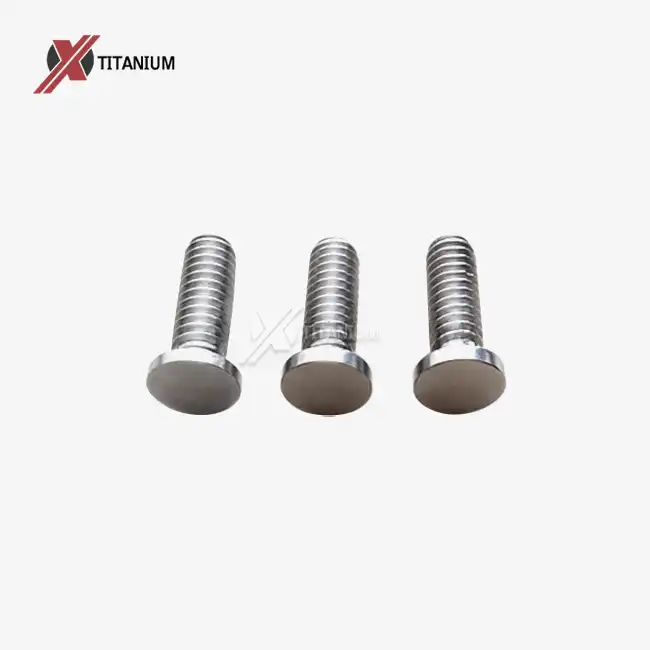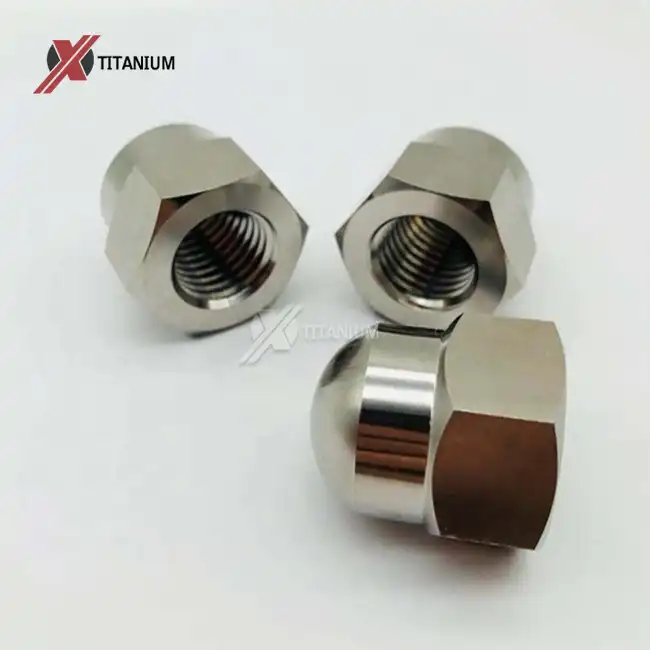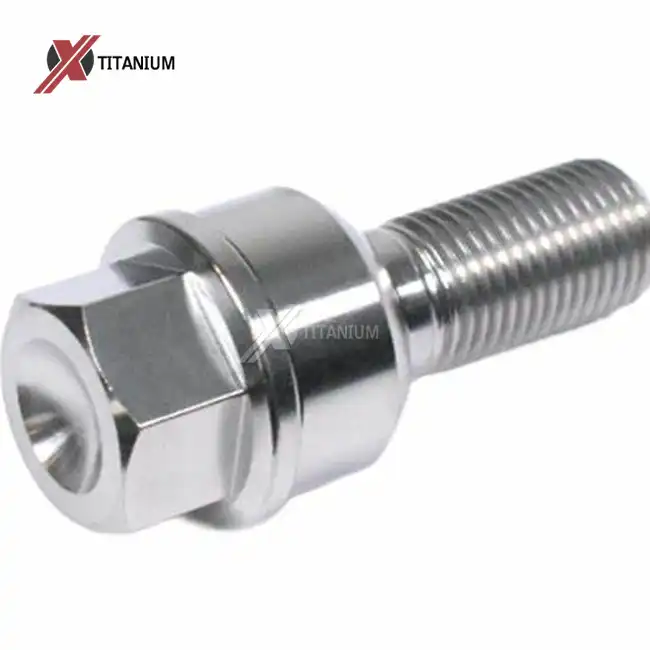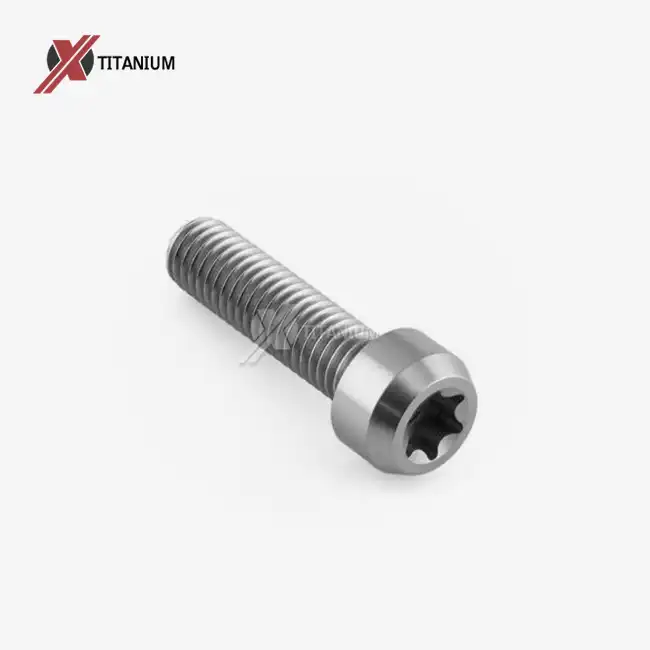The Unique Properties of Titanium Flat Wire
Strength and Lightweight Nature
Titanium flat wire boasts an impressive strength-to-weight ratio, making it a preferred choice in industries where weight reduction is critical. This property is particularly valuable in aerospace applications, where every gram matters. The wire's high tensile strength, which can reach up to 900 MPa, coupled with its low density, allows for the creation of robust yet lightweight components. This combination of strength and lightness contributes to fuel efficiency in aircraft and improved performance in various mechanical applications.
Corrosion Resistance
One of the standout features of titanium flat wire is its exceptional resistance to corrosion. This characteristic stems from the formation of a stable, protective oxide layer on the surface when exposed to oxygen. This natural barrier shields the metal from chemical attacks, making it highly resistant to saltwater, acids, and other corrosive environments. As a result, titanium flat wire is extensively used in marine engineering, chemical processing, and offshore oil and gas industries, where exposure to harsh conditions is a constant challenge.
Biocompatibility
Titanium's biocompatibility is another crucial property that expands its application scope, especially in the medical field. The human body does not reject titanium, and it does not cause allergic reactions, making it an excellent material for medical implants and surgical instruments. Titanium flat wire is used in creating dental implants, orthopedic devices, and cardiovascular stents. Its ability to integrate with human tissue and bone makes it invaluable in improving patient outcomes and quality of life.
Applications of Titanium Flat Wire Across Industries
Aerospace and Aviation
In the aerospace industry, titanium flat wire plays a crucial role in manufacturing various components. It is used in the production of aircraft engine parts, fasteners, and structural elements. The wire's high strength-to-weight ratio allows for the creation of lighter aircraft, which in turn leads to improved fuel efficiency and performance. Additionally, its resistance to high temperatures makes it suitable for use in jet engine components that are exposed to extreme heat.
Medical and Dental Applications
The medical field extensively utilizes titanium flat wire due to its biocompatibility and corrosion resistance. It is used in the production of surgical instruments, dental implants, and orthopedic devices. In dentistry, titanium flat wire is employed in creating frameworks for dental prostheses and orthodontic appliances. Its ability to osseointegrate (bond with bone) makes it an ideal material for long-term implants, improving patient comfort and treatment outcomes.
Marine and Chemical Industries
In marine applications, titanium flat wire's corrosion resistance is particularly valuable. It is used in the construction of ship components, offshore platforms, and underwater equipment. The wire's ability to withstand saltwater and marine organisms makes it a durable choice for these challenging environments. In the chemical industry, titanium flat wire is used in the fabrication of heat exchangers, reaction vessels, and pumps that handle corrosive substances. Its resistance to a wide range of chemicals ensures longevity and reliability in these critical applications.
Manufacturing Process and Quality Control
Production Techniques
The manufacturing process of titanium flat wire involves several sophisticated techniques to ensure the highest quality and precision. The process typically begins with the selection of high-grade titanium alloy, which is then subjected to a series of treatments. Cold rolling is a common technique used to achieve the desired thickness and width of the wire. This process involves passing the titanium through a series of rollers at room temperature, which work to reduce the thickness and increase the length of the material.
Hot rolling may also be employed, especially for larger dimensions or when specific mechanical properties are required. In this process, the titanium is heated to temperatures above its recrystallization point before rolling, which allows for greater deformation and can impart certain desirable characteristics to the material.
Annealing is another critical step in the production of titanium flat wire. This heat treatment process helps to relieve internal stresses, improve ductility, and enhance the overall properties of the wire. The annealing temperature and duration are carefully controlled to achieve the desired microstructure and mechanical properties.
Surface Finishing and Treatment
The surface finish of titanium flat wire is crucial for many applications. Various surface treatments are available to meet specific requirements. Pickling is a common process used to remove surface impurities and create a clean, uniform appearance. This involves immersing the wire in an acid solution to remove any oxide layers or contaminants.
For applications requiring a smoother finish, polishing techniques can be applied. This can range from mechanical polishing to electropolishing, depending on the desired level of smoothness and luster. Some applications may require a bright finish, which can be achieved through a combination of mechanical and chemical treatments.
In cases where increased surface roughness is beneficial, such as for better adhesion in composite materials, techniques like sandblasting can be employed. This process creates a textured surface that can improve bonding properties.
Quality Assurance and Testing
Rigorous quality control measures are essential in the production of titanium flat wire to ensure it meets the exacting standards required for its various applications. A series of tests are conducted throughout the manufacturing process and on the finished product.
Hardness testing is performed to verify the material's resistance to deformation. This is particularly important for applications where the wire will be subjected to high stress or wear. Bending tests assess the wire's ductility and formability, crucial properties for many manufacturing processes that involve shaping or forming the wire.
For applications in pressurized environments, hydrostatic testing may be conducted. This involves subjecting the wire to high-pressure fluids to check for any weaknesses or defects that could lead to failure in use.
Conclusion
Titanium flat wire is a remarkable material that has found its place in numerous high-performance applications across various industries. Its unique combination of strength, lightweight nature, corrosion resistance, and biocompatibility makes it an invaluable resource in aerospace, medical, marine, and chemical sectors. The versatility of titanium flat wire, coupled with advanced manufacturing techniques and rigorous quality control, ensures its continued importance in developing innovative solutions for complex engineering challenges. As technology advances, the applications for titanium flat wire are likely to expand, further cementing its status as a crucial material in modern industry.
At Baoji Chuanglian New Metal Material Co., Ltd., we pride ourselves on being a leading titanium flat wire factory, offering high-quality products tailored to meet the diverse needs of our global clientele. Our expertise in titanium products extends beyond flat wire to include a wide range of titanium components essential for various industries. If you're looking for reliable titanium flat wire or other titanium products for your next project, don't hesitate to reach out to us at info@cltifastener.com or djy6580@aliyun.com.
FAQs
What makes titanium flat wire different from other metal wires?
Titanium flat wire stands out due to its exceptional strength-to-weight ratio, superior corrosion resistance, and biocompatibility. These properties make it ideal for aerospace, medical, and marine applications where traditional metals may fall short.
Can titanium flat wire be customized for specific applications?
Yes, titanium flat wire can be customized in terms of dimensions, surface finish, and even alloying elements to meet specific application requirements. Our company offers a range of customization options to suit various industrial needs.
How does the manufacturing process ensure the quality of titanium flat wire?
The manufacturing process involves advanced techniques like cold rolling, hot rolling, and annealing, followed by rigorous quality control measures including hardness tests, bending tests, and hydrostatic testing to ensure the wire meets all specified standards.
References
1. Smith, J. (2021). "Titanium in Aerospace: Applications and Advancements." Journal of Aerospace Materials, 45(3), 210-225.
2. Johnson, M. R., & Brown, L. K. (2020). "Biocompatibility of Titanium Alloys in Medical Implants." Medical Device Engineering, 18(2), 87-102.
3. Zhang, Y., et al. (2019). "Corrosion Resistance of Titanium Alloys in Marine Environments." Corrosion Science and Technology, 54(6), 452-468.
4. Wilson, A. (2022). "Manufacturing Processes for Titanium Flat Wire: A Comprehensive Review." Advanced Materials Processing, 37(4), 301-315.
5. Lee, S. H., & Park, J. Y. (2023). "Quality Control Methods in Titanium Wire Production for High-Performance Applications." Journal of Materials Engineering and Performance, 32(1), 75-89.




